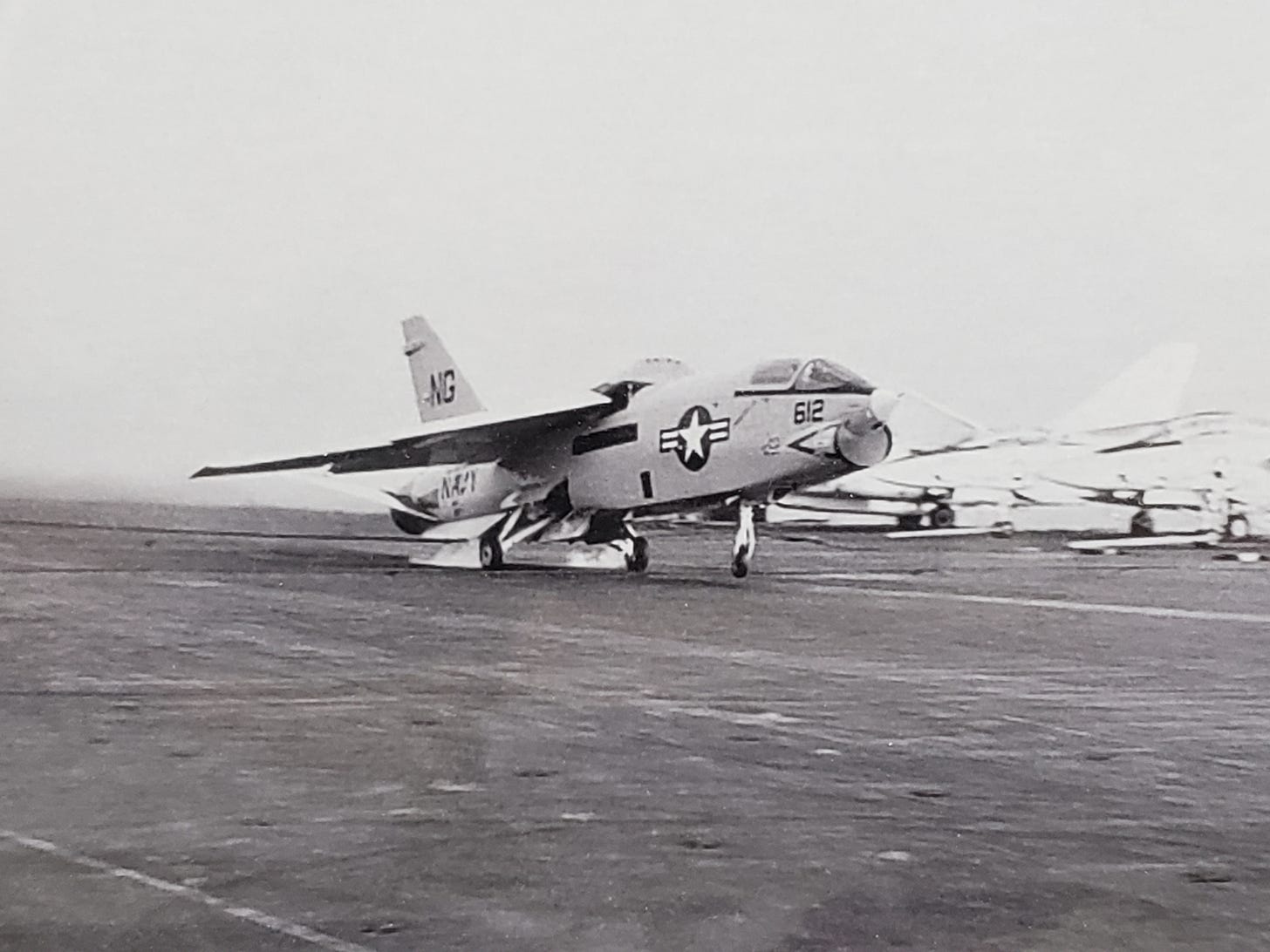Velocity: Episode XLVII
The Magic Carpet
“What human attributes are needed to win the next aerial conflict?”
—Come Chantrel
Magic Carpet: Also known as PLM which stands for Precision Landing Mode and also ACLS, which stands for Automatic Carrier Landing System.
In addition to the “silver bullet”, we now have the “magic carpet”. This represents a technological wonder par excellence. We have now crossed the “techno-Rubicon” into a brave new world where machines do much more of the work, and our workforce receives less and less training so as to redirect funding away from the human enterprise and into the insatiable jaws of the technological monster.
The opening scene of the Top Gun movie depicts the flight deck during carrier operations: the most admired opening scene of any movie ever produced.
But because of the technological wonder known as the “magic carpet”, student naval aviators will not be experiencing this critical aspect of naval aviation prior to graduation since human learning is now considered considerably less important than machine learning.
Captain Kevin Smith Recovering Aboard the USS Constellation After an Air Combat Preparatory Mission, South China Sea.
— The naval aviator undergraduate syllabus that contains successful completion of this phase of the carrier centric mission has been eliminated.—
Oh, yes, for the aircraft that contain the magic carpet, the magic spell is over. There is in fact a need for a new, expanded central core processor to accommodate this and other “necessary” functions. The unreliable software exhibits polymorphic behavior. There is lack of sufficient cooling, and systems’ upgrades are long overdue. In short, this massive digital system is so large it is now unmanageable.
Welcome to our brave new world!
In a recent panel discussion featuring headquarters personnel discussing the 6th generation fighter project for naval aviation, I asked if workload and training studies are underway in order to highlight mission-critical areas of the air combat mission. The question was never answered.
Apparently, technology and automation are now the focus and are taking up all of our mind-space. The onboard human operator is increasingly considered excess baggage.
But what, indeed, are the human attributes needed to win the next air warfare engagement when combat occurs at the high end of the conflict spectrum?
And “who can hold the air”?
The answer to this question is the side that can out-think and out-maneuver the enemy.
But before we dive into the warrior attributes (warrior ethos) necessary to succeed in battle, we must point out one more “thinking error” that must be corrected.
The “magic carpet”, in spite of being a technological marvel, introduces into the air combat system a single point of failure at which all missions could potentially fail if such a system could be corrupted.
This is insanity on steroids.
Our air combat system needs to be, above everything else, robust. It currently is not—it is brittle.
Now, what does the human operator (warrior) bring to the battle space, which is mission-critical and the most important among this subset?
Projection ( AKA: Outcome Projection).
Highly effective warriors can, at once, recognize and stay inside the enemies decision cycle. They perform this mission-critical activity, which is often referred to as outcome projection, on a regular basis, including the carrier landing phase of the air combat mission. Proficient carrier pilots mentally stay at least one, or two, moves ahead of the aircraft.
Why in the world would anyone want to automate this???
Endsley’s Situation Awareness Model. Note “Projection”. This is a learned behavior which gets better over time.



